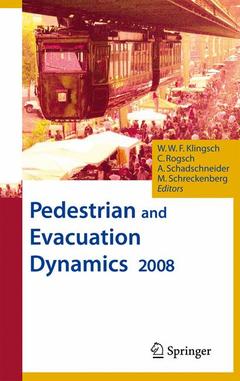Pedestrian and Evacuation Dynamics 2008, 2010
Coordonnateurs : Klingsch Wolfram W. F., Rogsch Christian, Schadschneider Andreas, Schreckenberg Michael

Includes supplementary material: sn.pub/extras
Date de parution : 08-2016
Ouvrage de 833 p.
15.5x23.5 cm
Disponible chez l'éditeur (délai d'approvisionnement : 15 jours).
Prix indicatif 210,99 €
Ajouter au panierDate de parution : 01-2010
Ouvrage de 833 p.
15.5x23.5 cm
Disponible chez l'éditeur (délai d'approvisionnement : 15 jours).
Prix indicatif 210,99 €
Ajouter au panier


